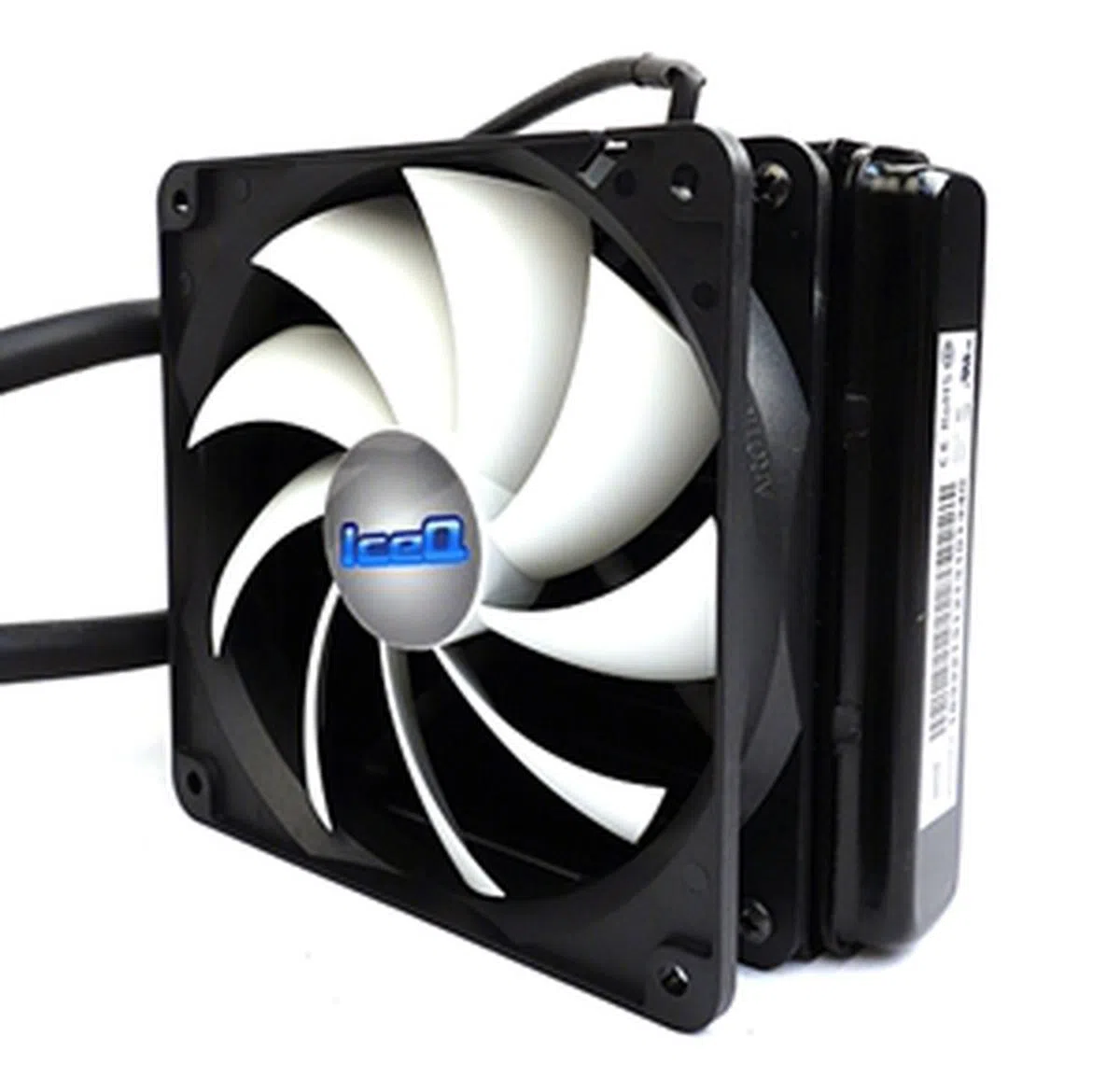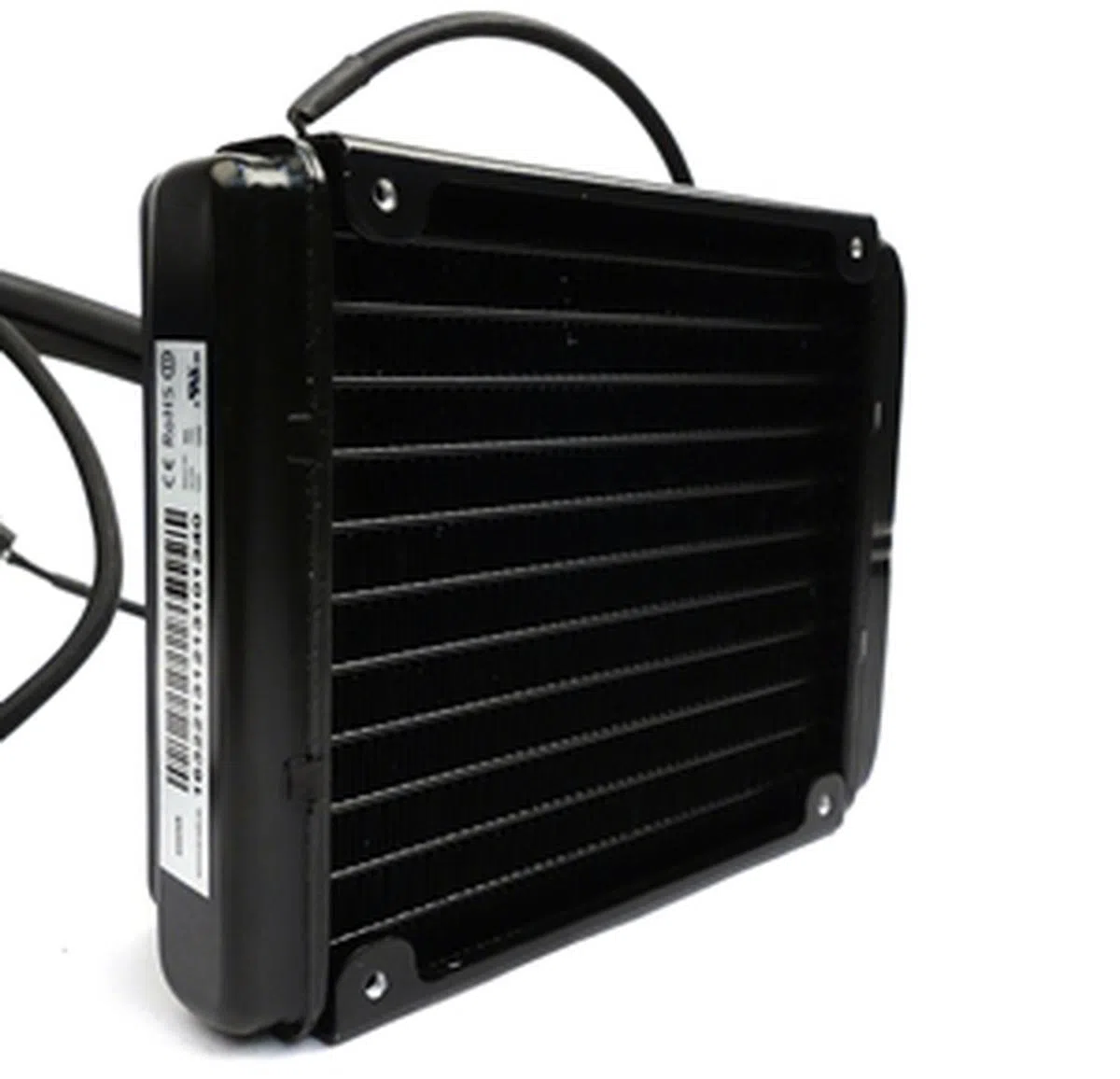HIS IceQ R9 290X Hybrid graphics card offers cool performance at a great price
The HIS Radeon R9 290X 4GB GDDR5 graphics card has a closed liquid cooling system that provides much-needed cooling to the AMD Radeon R9 290X core. The Hawaii-based GPU operates at high temperatures under load; so read on to uncover if such extreme cooling solutions can push its performance to new heights!
By Wong Chung Wee -
HIS IceQ R9 290X Hybrid - Cool runnings
It has been a while since our last HIS graphics card review, and it's befitting that we turn our undivided attention to the limited edition IceQ R9 290X Hybrid card. Based on the "Hawaii" graphics core, the card sports a slightly overclocked that has been rated to perform up to 1100MHz, an increment of roughly 10% over the default ceiling of 1000MHz. Besides this, the card also features 4GB of GDDR5 video memory that has been overclocked to operate at 6000MHz, against the default of 5000MHz. Hence, a robust cooler like its Arctic Accelero Hybrid cooling system is in order to keep things running cool!

The HIS IceQ R9 290X Hybrid graphics card features a slightly overclocked Radeon R9 290X GPU at 1100MHz. Its 4GB GDDR5 video memory has also been overclocked to 6000MHz. Hence, the closed liquid cooling kit is in order to keep things running cool!

Based on our previous experiences with two Radeon R9 290X cards, which were the ASUS Radeon R9 290X DirectCU II OC and the MSI Radeon R9 290X 4G Gaming, their custom cooling systems did their jobs to lower their operating temperatures to the vicinity of about 70 degrees Celsius or so. This was in stark contrast to the performance of the stock AMD Radeon R9 290X card, which registered a high of 87 degrees Celsius while operating under load. Therefore, let us take a quick peek under its hood to have a better understanding of its liquid cooling system.

(Image source: HIS)
The water block of the cooling kit is in direct contact with the card's GPU, while the "special metal rib" is a metal plate that conducts heat primarily from the video buffer memory chips. Right above these components is a white 80mm PWM intake fan encased in the plastic sheath. The look and feel of the card would have been improved tremendously if the sheath had been made from metal instead. At the heat exchanger or radiator, there is a 120mm PWM cooling fan. The entire radiator unit has a height of 150mm, and a width of about 125mm.
The metal backplate provides support for the card, and we noticed that there are cut-outs, which expose areas of the card's rear PCB. This may be for ventilation, to allow for better cooling of the exposed components.

The backplate of the card.
The card is powered by a pair of 8-pin Molex connectors, with a rated TDP of 300W.

The card has a pair of 8-pin Molex power connectors, with a rated TDP of 300W.
As we move along the top edge of the PCB away from the Molex power connectors, we see a BIOS switch that toggles between two sets of BIOSes. According to the company, one set is purely for backup.

The card has a BIOS switch that toggles between two sets of BIOSes.
For its video connectivity options, there are two dual-linked DVI ports, a DisplayPort port and a HDMI one.

There are two dual-linked DVI ports, a DisplayPort port and a HDMI one.
In terms of the dimensions of the card, despite the presence of the fan sheath, the card measures a svelte 45mm in width, and is effectively a dual-slot component. After taking stock of its measurements, let us see if it measures up in terms of performance

(Image source: HIS)
Test Setup
These are the specifications of our graphics test bed:
- Intel Core i7-3960X (3.3GHz)
- ASUS P9X79 Pro (Intel X79 chipset) Motherboard
- 4 x 2GB DDR3-1600 G.Skill Ripjaws Memory
- Seagate 7200.10 200GB SATA hard drive (OS)
- Western Digital Caviar Black 7200 RPM 1TB SATA hard drive (Benchmarks + Games)
- Windows 7 Ultimate 64-bit SP1
We rounded up one of the reviewed AMD Radeon R9 290X custom graphics card from ASUS for comparison. It makes a good representative for such cards on the market. We have also included other top-end NVIDIA cards like the Gigabyte GeForce GTX 780 Ti Windforce 3x OC. Below is the complete list of cards fielded for comparison.
- HIS IceQ R9 290X Hybrid 4GB (AMD Catalyst 14.4)
- ASUS Radeon R9 290X DirectCU II OC 4GB (AMD Catalyst 14.4)
- Gigabyte GeForce GTX 780 Ti Windforce 3x OC 3GB GDDR5 (ForceWare 340.52)
Benchmarks
Since we've established the full performance profile of the Radeon R9 series of graphics cards, we're only focusing on a subset of our usual benchmarks to determine the gaming performances of the HIS limited edition card. The two benchmarks used are as follows:-
- Futuremark 3DMark 2013
- Crysis 3
Here's a quick look at the specifications of the HIS IceQ R9 290X Hybrid 4GB card against the competing cards:-
[hwzcompare]
[products=469182,438491,432967]
[width=175]
[caption=HIS IceQ R9 290X Hybrid 4GB GDDR5 and competitive SKUs compared]
[showprices=0]
[/hwzcompare]
Gaming Results



The cards were put through two tests within the 3DMark 2013 benchmark: Fire Strike and Fire Strike Extreme. For gauging real-life gaming experiences, we measured the average FPS recorded during a rendered game scene of Crysis 3. From the graphs above, we can see the general standing of the cards; the Gigabyte GeForce GTX 780 Ti Windforce 3X OC is in pole position, the HIS IceQ R9 290X Hybrid is runner-up and the ASUS Radeon R9 290X DirectCU II OC is third. This sub-set of gaming benchmarks have again confirmed the fact the NVIDIA GeForce GTX 780 Ti is the top dog GPU.
Between the two AMD Radeon R9 290X cards, the HIS card has the upper hand as its Hawaii graphics core has a slightly higher clock speed of 1100MHz, versus the ASUS card's clock speed of 1050MHz. The HIS card's advantages also extend from its cooler operating temperatures (that we shall examine in the next section of the article) and its whisper quiet closed liquid cooling system. With those two superior factors, the HIS card is able to leverage on the improved AMD PowerTune technology to further boost its performance. To recap, the AMD PowerTune technology makes use of the supported card’s temperature, power consumption and voltage draw, as well as fan speeds, to boost the GPU's performance.
Overclocking Results
Due to the superiority of its cooling system, we were able to overclock the HIS IceQ R9 290X card to a high of 1200MHz and 6200MHz for its GPU and video memory modules respectively. This roughly translated to a gain of 6% over its non-OC performance levels. The Gigabyte 780 Ti card had a gain of about 8%, while the ASUS 290X card enjoyed a 5% gain we we tried overclocking these respective cards. Here then are the resultant performance graphs compared side-by-side with and without overclocking:-


Temperature and Power Consumption Results
The Arctic Accelero Hybrid cooling system of the HIS card was very effective, and it kept the GPU's operating temperature to a low of 65 degrees Celsius. However, the HIS card registered the highest system power draw of 465W among the three cards. This is due to fact that its GPU and video buffer memory have been overclocked, and additional power is also needed to drive the liquid pump of its cooling system.


Conclusion
The HIS IceQ R9 290X Hybrid strongest feature is its liquid cooling system; it operates quietly and enabled the card to be overclocked easier for a slight performance gain. The cooling system may have contributed in part to the higher power draw of the card; however, this slight drawback is necessary as the cooling system is much needed to keep the operating temperature of its overclocked Hawaii GPU in check. Another plus point is the svelte profile of the card despite the presence of its superior cooling system.
The card is available here and its SRP is S$839, which translates into a 12% discount over the average launch price of S$950 for a typical high-end AMD Radeon R9 290X card. Even right now, the MSI R9 290X Gaming and ASUS Radeon R9 290X DirectCU II OC both cost a fair bit more than the HIS IceQ R9 290X Hybrid that we've reviewed here today, yet the HIS card delivers more. A well performing GeForce GTX 780 Ti graphics card that took the pole position in our tests like the Gigabyte WindForce 3x OC edition costs substantially more.
In a nutshell, HIS has a winning card in its hands and we would easily recommend it as long as your system has space to accommodate the liquid cooler's radiator unit and its associated cabling.

The HIS IceQ R9 290X Hybrid card turned in a better than average performance against high-end graphics cards. Its superior cooling system and excellent price point makes it all the more irresistible!
Our articles may contain affiliate links. If you buy through these links, we may earn a small commission.

